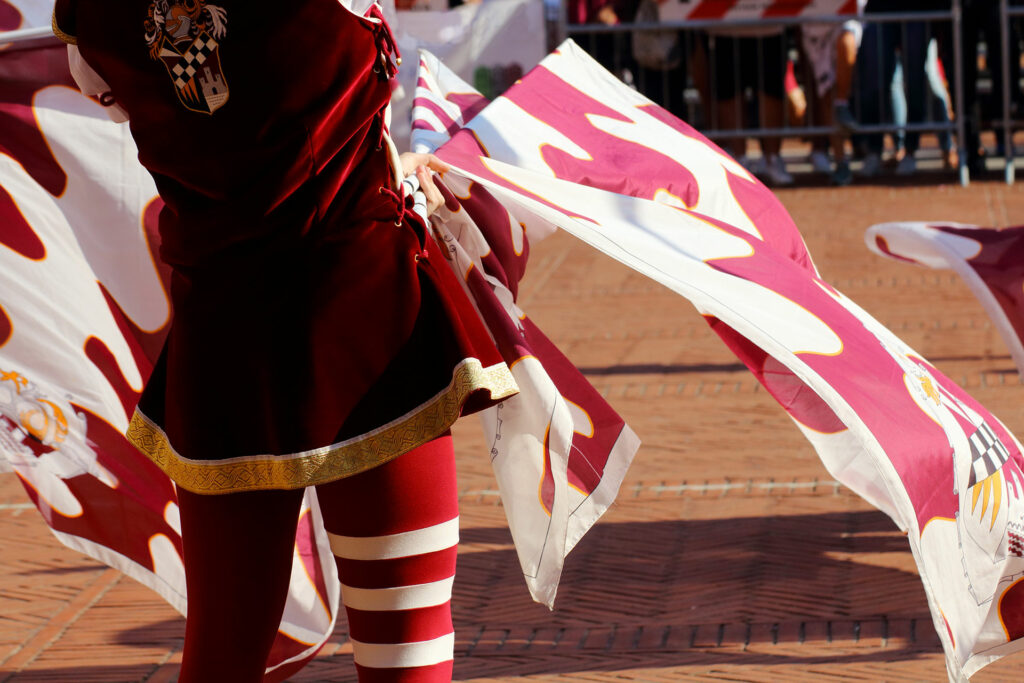Folklore and traditions
The area where our agritourisms are located and the surrounding areas are rich in history and popular traditions, events that have been handed down for centuries, unique and unmissable moments for tourists and locals alike, opportunities to meet, have fun and learn about the local culture. Here are some of the folkloristic events that take place in the Tuscan Maremma mainly during the summer.
One among many is the Palio marinaro of Castiglione della Pescaia , whose origins date back to 1952, the year of the first challenge that took place between the fishermen of the area. At one time the event was held along the city stretch of the Bruna river, but for some
years now it has been transferred directly to the sea. Challenging each other are five boats, renamed to represent each district into which the town is divided, namely: Castello, Marina, Piazza, Ponte, Portaccia.
The event usually takes place in the last weeks of August and also includes days dedicated to the under-18 and women’s palio, both desired by the townspeople and recently added to the primary event.
Also in August, the Maremma hosts another palio of ancient tradition, whose first event dates back to 1937. It is the Argentario seafaring palio (one of the longest regattas in the world). Again, it is a regatta in which four boats, each representing the four districts of Porto
Santo Stefano: Valle, Fortezza, Croce and Pilarella, compete against each other. Each district competes aboard a gozzo (in dialect, ‘guzzo’) named after a wind: Maestrale, Grecale, Libeccio and Scirocco. Today, the palio is held at Porto Santo Stefano, during the
first days of August, on the occasion of the patron saint’s celebrations.
Le Balestro del Girifalco, à Massa Marittima, est un autre défi folklorique qui n’a plus de thème maritime, mais qui se déroule sur la terre ferme. Il s’agit d’une commémoration historique qui a lieu deux fois par an, le quatrième dimanche de mai et le 14 août respectivement. Avant la compétition proprement dite, une procession médiévale défile dans les rues de la ville et les lanceurs de drapeaux exécutent de merveilleuses chorégraphies.
L’épreuve proprement dite a lieu ensuite, au cours de laquelle les arbalétriers s’exercent à l’utilisation de l’ancienne arbalète italienne. L’arbalétrier tire la flèche vers la cible (appelée “corniolo”) située à une distance de tir de 36 mètres. L’événement est appelé Balestro del Girifalco précisément parce que la cible est placée au centre du “girifalco”, c’est-à-dire d’un bois en forme de cône tronqué. L’arbalétrier qui réussit à toucher le cornet le plus près possible du centre remporte la victoire. Le prix décerné au vainqueur consiste en une flèche symbolique en or, tandis que le Terziere auquel il appartient reçoit un “drappellone” en soie peinte.
We could not fail to conclude this review with the palio par excellence, perhaps the best known of all, traces of which can be found in records dating back to the 17th century: the Palio di Siena. Participating in this event is undoubtedly a unique opportunity to get to know
the city’s deep soul. The heat, the fervour, the passion, the rivalry between the Sienese contrade, all find their maximum expression on the days of the palio: 2 July, in honour of the Madonna di Provenzano, and 16 August in honour of the Madonna Assunta.
The contrade, represented by a horse and a jockey, compete on the day of the palio.
Participation concerns 10 out of 17 contrade (7 are those that did not participate the previous year in that Palio, while the other 3 are drawn by lot).
There are four days of the palio, but the real challenge takes place on the day of the official horse race, which is held in the famous Piazza del Campo, set up especially for the occasion.
The rules of the Palio di Siena have evolved and expanded over time, but what counts is that the contrada whose horse completes the three laps of the square first (even if ‘shaken’, i.e., without a jockey on it) will win the challenge. Not an easy challenge, especially because of the rough spots the animals have to overcome.
It is possible to watch the Palio free of charge by going to the Piazza well in advance, equipped with water, drinks and accessories to protect yourself from the scorching sun; alternatively, for a fee, there are more comfortable seats, either on the grandstands or on the
balconies surrounding the Piazza. Of course, due to the crowds and the type of event, it is not advisable to bring small children to watch the Palio in Piazza del Campo.

